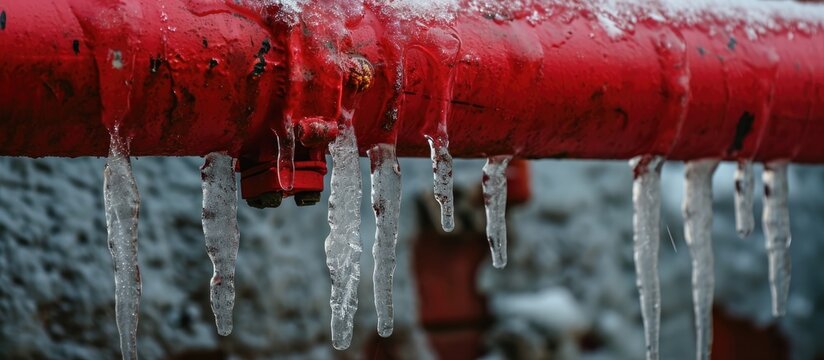Advice for Preventing Frozen Pipes in Cold Weather: Professional Tips
Advice for Preventing Frozen Pipes in Cold Weather: Professional Tips
Blog Article
Just about every person has got his or her own theory involving How to Prevent Your Pipes From Freezing.

Winter can ruin your pipes, especially by freezing pipes. Here's how to stop it from taking place and what to do if it does.
Introduction
As temperatures decline, the danger of frozen pipelines boosts, potentially leading to pricey repair services and water damage. Recognizing exactly how to prevent icy pipes is critical for house owners in cold environments.
Understanding Frozen Pipelines
What triggers pipelines to freeze?
Pipelines freeze when revealed to temperatures below 32 ° F (0 ° C) for prolonged durations. As water inside the pipes ices up, it broadens, taxing the pipe wall surfaces and potentially creating them to rupture.
Risks and damages
Icy pipes can bring about water supply interruptions, home damage, and expensive fixings. Ruptured pipes can flooding homes and cause considerable structural damages.
Indications of Frozen Pipes
Determining icy pipes early can stop them from bursting.
Just how to determine icy pipes
Search for lowered water flow from faucets, uncommon smells or noises from pipes, and noticeable frost on revealed pipelines.
Prevention Tips
Protecting prone pipelines
Cover pipes in insulation sleeves or use warm tape to secure them from freezing temperature levels. Concentrate on pipelines in unheated or external locations of the home.
Home heating techniques
Keep interior spaces properly warmed, particularly locations with plumbing. Open up cupboard doors to permit warm air to flow around pipes under sinks.
Shielding Outdoor Pipes
Garden hose pipes and exterior faucets
Detach and drain pipes garden pipes prior to winter. Set up frost-proof faucets or cover outdoor taps with insulated caps.
What to Do If Your Pipelines Freeze
Immediate actions to take
If you think frozen pipes, maintain faucets available to alleviate stress as the ice melts. Utilize a hairdryer or towels soaked in hot water to thaw pipes slowly.
Long-Term Solutions
Structural changes
Consider rerouting pipes away from exterior walls or unheated areas. Include extra insulation to attic rooms, cellars, and crawl spaces.
Updating insulation
Buy high-quality insulation for pipelines, attic rooms, and walls. Proper insulation aids preserve constant temperatures and reduces the danger of frozen pipes.
Conclusion
Avoiding frozen pipes needs positive steps and fast actions. By recognizing the reasons, signs, and preventive measures, house owners can safeguard their plumbing during winter.
5 Ways to Prevent Frozen Pipes
Drain Outdoor Faucets and Disconnect Hoses
First, close the shut-off valve that controls the flow of water in the pipe to your outdoor faucet. Then, head outside to disconnect and drain your hose and open the outdoor faucet to allow the water to completely drain out of the line. Turn off the faucet when done. Finally, head back to the shut-off valve and drain the remaining water inside the pipe into a bucket or container. Additionally, if you have a home irrigation system, you should consider hiring an expert to clear the system of water each year.
Insulate Pipes
One of the best and most cost-effective methods for preventing frozen water pipes is to wrap your pipes with insulation. This is especially important for areas in your home that aren’t exposed to heat, such as an attic. We suggest using foam sleeves, which can typically be found at your local hardware store.
Keep Heat Running at 65
Your pipes are located inside your walls, and the temperature there is much colder than the rest of the house. To prevent your pipes from freezing, The Insurance Information Institute suggests that you keep your home heated to at least 65 degrees, even when traveling. You may want to invest in smart devices that can keep an eye on the temperature in your home while you’re away.
Leave Water Dripping
Moving water — even a small trickle — can prevent ice from forming inside your pipes. When freezing temps are imminent, start a drip of water from all faucets that serve exposed pipes. Leaving a few faucets running will also help relieve pressure inside the pipes and help prevent a rupture if the water inside freezes.
Open Cupboard Doors
Warm your kitchen and bathroom pipes by opening cupboards and vanities. You should also leave your interior doors ajar to help warm air circulate evenly throughout your home.

Do you appreciate reading up on 6 Ways to Prevent Frozen Pipes? Post feedback down below. We'd be pleased to find out your feelings about this blog. We are looking forward that you visit us again before long. Don't hesitate to take a moment to share this blog entry if you enjoyed reading it. Many thanks for your time spent reading it.
Call Today Report this page